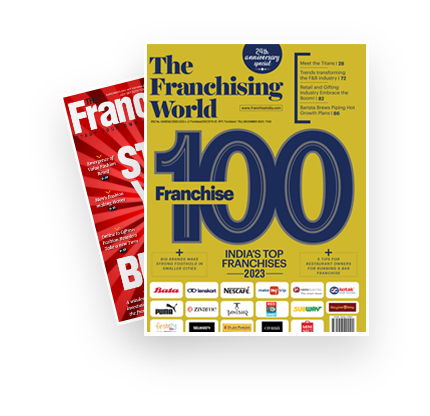
India’s baby products market is on a trend right now. You’ve got more young parents in cities, extra cash in their pockets, and online shopping making it easier than ever to buy what they want. People aren’t just picking up whatever’s cheapest anymore—they’re looking for products that feel safe, premium, and honestly, make their lives simpler. There’s a ton of action across the board: diapers, formula, baby food, skincare, toys, feeding gear, and nursing essentials. It’s a huge opportunity.
This guide lays out exactly how to launch a baby products business in India in 2026, step by step. You’ll find what you need to know about rules and certifications, sourcing and manufacturing, branding, packaging, and how to actually get your products into people’s hands—online and offline. I’ve included real cost estimates in rupees and a simple first-year financial plan to get your head around the investment. Whether you want to build a small D2C brand or go big with something mainstream, this guide helps you check your idea, set up shop, and grow with confidence.
Also read: How to Start a Spice Business in India
Step-by-Step Process of Starting a Baby Products Business in India
1) Quick market reality check
.jpg)
India has one of the world’s highest birth rates—around 25 to 26 million babies each year. Plus, more parents (not just in big cities, but smaller towns too) are ready to spend on quality, safety-focused products for their kids. The whole market’s growing at a double-digit pace. Reports put the annual growth somewhere between 11% and 17%. At the same time, organized retail and digital sales are booming—look at FirstCry’s blockbuster IPO as proof. Both major brands and small, niche players are riding this wave.
2) Choose your product niche
.jpg)
When entering the baby-products segment, it’s important not to launch with too many categories at once. A narrow product range helps maintain quality control, reduces inventory risk, and strengthens brand positioning. Instead, select one to three high-potential niches based on your capabilities and demand trends.
Promising categories include:
- Diapers and hygiene products (disposable or cloth hybrids): Parents buy these on repeat, so margins are good, and you can build a steady subscription or repeat-purchase model.
- Infant food, formula, and complementary foods: Heavily regulated, but the demand is huge. Parents pay a premium for nutrition and convenience. You have to follow FSSAI rules to the letter.
- Baby skincare and toiletries (soaps, shampoos, lotions, oils): These move fast, but trust matters—a lot. Brand loyalty can make or break you.
- Feeding and nursing accessories (bottles, sterilizers, breast pumps): Higher price tags here, and you need solid safety testing and certifications.
- Toys and developmental products: Great margins if you guarantee safety and learning value. Every toy sold in India must meet BIS safety standards under the Toys (Quality Control) Order, 2020.
Starting focused lets you build credibility, iron out your processes, and grow at a pace you can actually manage. Once you’ve nailed one niche, you can always branch out.
3) Regulatory & compliance checklist
.jpg)
Regulatory compliance is the most sensitive part of launching a baby-products brand in India, and it must be finalized before manufacturing or selling any SKU. Each category falls under its own set of rules, and missing even one requirement can lead to fines or getting kicked off the shelves.
- For infant foods and formula, FSSAI is the top authority. You need to comply with strict rules on ingredients, labeling, packaging, warnings, and health claims. If your formula doesn’t fit an existing standard, you have to get pre-market approval. All licensing happens on the FoSCoS portal, and you must stick to FSSAI’s labeling guidelines for infant and young-child foods—no shortcuts.
- Toys need mandatory BIS certification under the Toys (Quality Control) Order, 2020. The exact rules depend on the type of toy and the age group. Testing covers small parts (choking hazards), flammability, and harmful substances.
- For cosmetics and baby skincare, follow the Drugs & Cosmetics Act. List ingredients using INCI names, and do safety and stability tests.
- Every baby product also has to meet Legal Metrology (Packaged Commodities) Rules. That means showing net quantity, batch number, expiry, MRP, and manufacturer/importer info. If your product is tiny and there’s barely any label space, there are special packaging rules for that.
- GST rates for consumer goods usually fall into 5%, 12%, or 18%. Disposable baby diapers have been taxed at 12%, but double-check your product’s HSN code and current rate before you set prices.
For budgeting, plan to spend ₹50,000–₹3,00,000 per SKU on lab testing and certifications for infant foods and toys. That’s money well spent—it keeps you compliant and gives parents peace of mind.
4) Sourcing & manufacturing options
.jpg)
Choosing the right production approach depends on your investment capacity, quality expectations, and how quickly you want to enter the market.
- Private label/contract manufacturing (OEM) is ideal for D2C brands aiming for a fast launch with lower upfront capital. You get lower risk, fast scalability, and less headache, but there’s a catch: manufacturers usually set minimum order quantities. For toiletries, that’s usually anywhere from 2,000 to 10,000 units. Diapers and baby food? The numbers go even higher.
- Setting up your own factory gives you full control—margins, quality, the whole brand journey—but it’s a big commitment. For a small skincare filling and packing setup, expect to put in ₹10–30 lakh. If you’re eyeing diapers, a mid-sized production line lands between ₹1–4 crore. An infant food processing unit can run from ₹25 lakh up to ₹3 crore, depending on how automated you want things.
- There’s another route: import and resell. This works well for high-end foreign baby goods, as long as you’ve sorted out all your BIS/FSSAI certifications and import paperwork.
No matter how you make or source your products, don’t skimp on quality checks. Use third-party lab testing, get COAs for your raw materials, do those GMP audits, and make sure you can trace each batch from start to finish.
5) Brand, packaging & positioning
.jpg)
In the baby-products world, trust is everything and you need to win parents over at the very first glance. That means packaging, labels, ads—everything—needs to scream safety, quality, and real benefits.
- Keep your packaging clean, clear, and packed with info parents actually care about. For infant foods, the FSSAI isn’t messing around: you have to include specific instructions, warnings, and even minimum font sizes, so your labels need to be fully compliant.
- Sustainability isn’t just a buzzword anymore. Parents are looking for recyclable packaging, refills, and reusable cloth diapers. These details matter and can give your brand a real edge with eco-conscious families.
- One thing you can’t afford is making claims you can’t back up. If you say “dermatologically tested” or “pediatrician recommended,” make sure you’ve got the proof—actual testing, real experts, not just marketing fluff.
For branding and packaging, most new businesses spend about ₹1–3 lakh upfront. That covers design, samples, and getting your first batch printed and ready to go.
Also read: 11 Small Business Ideas in Punjab
6) Pricing, GST, and margins
.jpg)
Pricing in this space is all over the map, but here are some numbers to help you plan your first year. Disposable diapers (mid-range) usually cost ₹20–₹40 per diaper for you; a 30-pack goes for ₹600–₹1,200 retail. Brands pull in 30–50% gross margins, but keep an eye on channel commissions and scale.
- Diapers usually get hit with 12% GST, though you should double-check the latest rates.
- Baby lotion (100 ml) costs around ₹40–₹70 to make, with a retail price of ₹199–₹349. Cosmetics and toiletries usually see 12–18% GST, depending on what’s in them.
- For infant ready-to-eat food (200 g), your cost per pack is ₹80–₹150, but you can sell it for ₹199–₹399. FSSAI compliance does bump up costs, but people are willing to pay more for this category.
No matter what you’re making, always calculate your landed cost—add up manufacturing, packaging, shipping, lab testing, GST, and marketplace or channel fees. Then set your MRP to make sure you’re not killing your margins.
7) Distribution & sales channels
.jpg)
When it comes to selling, a multi-channel approach works best, but don’t try to do everything at once. Start with your own website (D2C) for the best margins and full control over your data. Subscription models—like for diapers or wipes—can lock in repeat business. That said, digital ads aren’t cheap. Customer acquisition can run anywhere from ₹500 to ₹2,500 per person, depending on where and how you advertise.
Marketplaces like Amazon, Flipkart, FirstCry, and Nykaa help you scale up fast, but they’ll take a 10–25% commission (plus whatever you spend on ads). Getting into modern trade, pharmacies, and baby stores builds trust, while wholesaling and the kirana network are great if you want to go mass-market. A smart rollout: launch D2C and on one or two marketplaces, then expand into retail when you’re confident about demand and logistics.
8) Marketing & customer acquisition
.jpg)
Content and community are your secret weapons in this space. Parenting blogs, social media, WhatsApp groups, and partnerships with mom influencers or parenting bloggers help you build real trust and organic reach. For paid growth, Facebook and Instagram ads and Google Shopping work well, but actual costs swing by product. Subscription bundles help you hold onto customers and keep churn down.
One thing that really moves the needle: outreach to pediatricians and sampling programs. Parents trust doctors more than anyone, so getting your products into clinics or hospitals works wonders. Spending ₹50,000 to ₹2 lakh on samples early on can give you a quick boost. In offline stores, demo counters and strong in-store displays make a huge difference when it comes to getting people to actually buy.
9) Operations & logistics
.jpg)
Effective inventory planning is crucial for a baby products business in India. For things like diapers and toiletries that fly off the shelves, you want to keep 45 to 90 days of stock handy so you never run out. Infant foods and those niche D2C products? Stick to 30 to 60 days. That way, you don’t end up tossing expired goods. In the beginning, it just makes sense to let a third-party logistics partner handle fulfillment. You’ll usually pay anywhere from ₹60 to ₹150 per order, depending on what you’re shipping and how far it’s going. Don’t forget customer service. Parents expect fast replies and an easy return or replacement if something’s off. Handle that well, and you’ll win their loyalty and keep them coming back.
10) Risks & mitigation
.jpg)
- Regulatory non-compliance: Mitigate by hiring a consultant, following FSSAI/BIS rules, and retaining test COAs.
- Cash flow/overstock: Start lean, sell on pre-orders for large first runs, and use 3PL with no/minimum storage commitments.
- High CAC: Build content and retention (subscriptions), and use referral credits and bundles to improve LTV:CAC.
Also read: How to Start an Event Management Business in India
Bottom line
Starting a baby products business in India in 2026 offers strong growth potential, but it demands strict regulatory compliance. Start small—pick a tight product lineup and set aside ₹10–40 lakh if you want to hit both D2C and marketplaces from day one. Safety is non-negotiable. Get your products lab-tested, label everything correctly, and go for certifications like BIS and FSSAI when you need them. Parents rely on trust, so don’t skimp on educational content, tap into micro-influencers, and get pediatricians on your side. A subscription model for everyday essentials keeps customers coming back without you having to chase them. If you stay sharp on quality and keep building trust, you can grow from a D2C launch into a full-blown national brand with steady, recurring revenue.
You might also like: How to Start a Gym Business in India?

